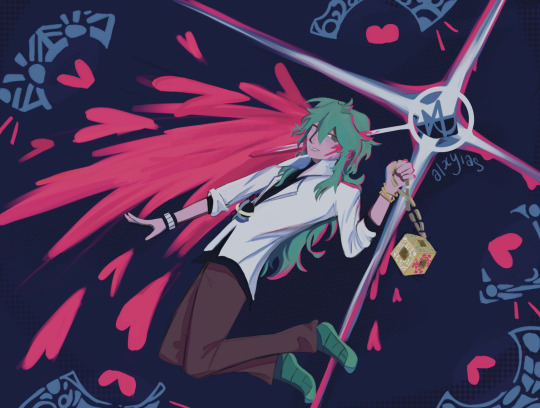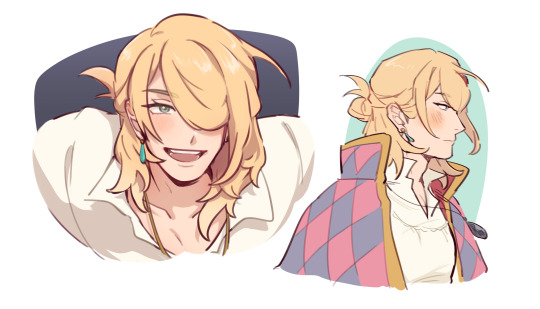Text

puts the N in gel pen or something. this is my favorite line of his
90 notes
·
View notes
Text
Howl's Moving Castle, BPD and why representation matters.
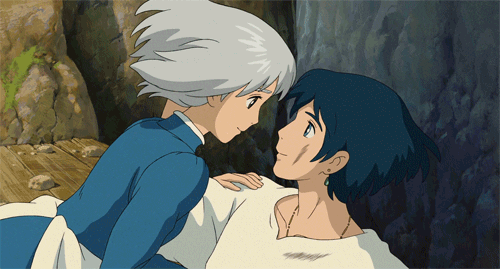
I remember watching Howl’s Moving Castle for the first time at a very young age (my father raised me and my brother watching Ghibli’s films religiously) and immediately feeling some kind of understanding of the character in a way I’ve never did before. I have struggled with emotional disregulation all my life, being called dramatic and even hysterical since I was a child. So, the first time I saw Howl having the “temper tantrum” moment over a small inconvenience was something that made me think “he’s like me” really quickly. Obviously, as an eight year old, the thought wasn’t really developed much further, and my attention was more drawn to the beautiful scenery and this idea of everlasting love that many young girls dream about. However, as I grew up re watching the film over and over again, things started to click.
The first time I received a pre diagnosis for BPD I was around 14 years old, although my first official diagnosis wasn’t until I was 19, since you can’t be diagnosed with a personality disorder before you are an adult.
According to the Diagnostic and Statistical Manual of Mental Disorders (DSM-5), Borderline Personality Disorder is a a “pervasive pattern of instability of interpersonal relationships, self-image, and affects, and marked impulsivity, beginning in early adulthood and present in a variety of contexts”. To receive a diagnosis, one should typically meet at least five out of nine symptoms.
Cluster B personality disorders are some of the most stigmatized mental illnesses, especially by their depictions in popular media. You get characters that fall under the “unstable villain” category, or somewhere closer to the “manic pixie dream girl” trope, both harmful stereotypes that affect the way people perceive patients that have BPD. One should also take into account that mental health issues are just starting to become more normalized topics of discussion, so most people in the past only had films and TV shows to form a mental image of what mental disorders look like in real life.
Please note that further on, I will be discussing mostly headcanons, as this character has never been confirmed to be neurodivergent and probably never will. So, this is just my opinion as an anime fan and a person with BPD, and you’re totally entitled to disagreeing with me.
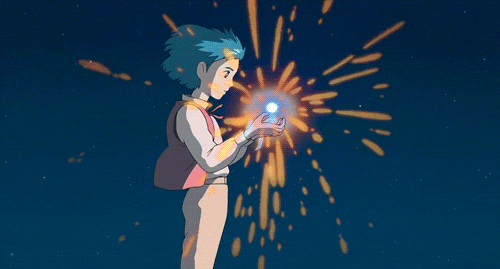
Going back to my personal experience, I remember watching the film in 2019, shortly after receiving my official BPD diagnosis, so the topic was really present in my mind at the time. I found that the way I related to this character was heavily linked with his emotional complexities, but I also felt a sense of comfort by watching him develop as a human being in a supportive environment. I quickly realized that the thing that made Howl different from other characters I related to was, precisely, that he was mostly presented in a really positive light. He was, after all, charming, loving and protective of his found family. He was complex and nuanced, but genuinely loved as well. This solidified him as one of my all time favorite characters, and now I’d like to discuss his personality traits linked to BPD criteria.
Chronic feelings of emptiness.
Howl exhibits this one frequently during the film. From his constant questioning about his role in the war that he’s forced to participate in, to the depressive-like state in which he is portrayed while laying in his bedroom, with Sophie trying to get him out of bed. A lot of people with this disorder often feel like life has no inherent meaning when they’re not engaged in risky behavior, not being able to really explain the source of this lethargy that prevents them from doing things or even be excited about daily life events. This emptiness comes from deep within and can be the reason why they seek filling the void with all sort of what could be considered as harmful behavior patterns.
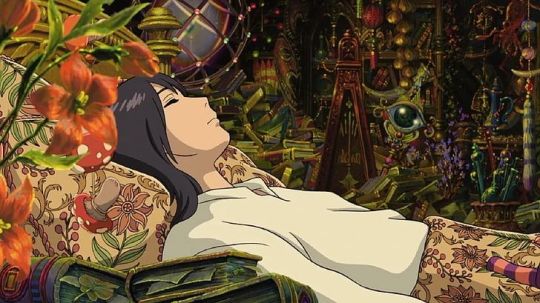
Feelings of dissociation, such as feeling cut off from oneself, observing oneself from outside one’s body, or feelings of unreality. Transient, stress-related paranoid idealization or severe dissociative symptoms.
Somewhat linked to the first symptom, Howl does fluctuate between complete disconnection from himself and his body, and high paranoia about losing himself to the horrors of war, and also being harmed by the queen and her curse. This might be a reach, but I also see it in the way his heart is physically separate from his body in the form of Calcifer. One can feel as if their emotions are so out of control that they seem to be someone else’s, or that they act separately from one’s will. This dissociative state also prevents patients from actually realizing how harmful their decisions and actions can actually be.
Emotional instability in reaction to day-to-day events (e.g., intense episodic sadness, irritability, or anxiety usually lasting a few hours and only rarely more than a few days).
This is one of the most obvious throughout the film. He can appear completely numb in one scene, then frantic in the next one, then happy and loving towards others, then enraged. As emotional disregulation happens very often to people with BPD, these intense and changing emotions drains us of our energy, and is extremely hard to manage without proper medical aid such as behavioral therapy. Some people do look at some sort of bright side of this experience, where we feel happiness and joy just as profoundly as other emotions.
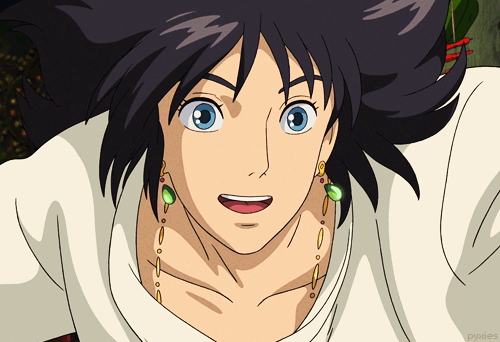
Frantic efforts to avoid real or perceived abandonment, such as plunging headfirst into relationships—or ending them just as quickly.
This one doesn’t need a lot of explaining. Howl constantly seeks Sophie’s reassurance and is totally willing to change his lifestyle and his home just to make her comfortable enough so she doesn’t leave. This can come across as sweet, genuine displays of his love for her, but in real life, a person with BPD can lose themselves in the process of avoiding their loved ones leaving. The constant gifts and changes with only Sophie’s well being in mind wouldn’t be sustainable in a world without Howl’s magical powers, after all.
Identity disturbance with markedly or persistently unstable self-image or sense of self.
Here we have the iconic green slime meltdown scene. He, quite literally, cannot cope with the idea of his hair changing without his control. This comes across as his vanity coming to life, but I feel like there’s a deeper sense to it. When he says he sees “no point in living if he can’t be beautiful” he means it: he has built a great part of his identity around being perceived as pretty. This is really common among people with BPD, where the lack of a stability in identity can be overcompensated via physical appearance and presenting oneself as desirable. He acts like the world is ending because for him it is, not because he cares more about his looks than anything else.
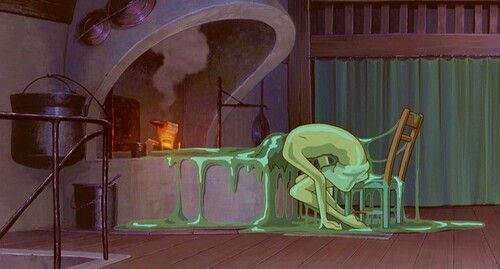
Impulsive behavior in at least two areas that are potentially self-damaging (e.g., spending, sex, substance abuse, reckless driving, binge eating).
Recurrent suicidal behavior, gestures, threats, or self-harming behavior.
I’m including this two symptoms together because the way they’re portrayed overlaps a lot. The way Howl acts around participating in the war comes across as just a way to endanger himself, as he explicitly says that he’s not interested in the political implications of the conflict. However he keeps going into battle, transformed into the monster-like shape which Calcifer keeps pointing out as dangerous and that it could be potentially irreversible. His sense of duty towards a country is also absent (he, quite literally, plays a part in both sides) so one can only speculate what are his true motives to expose himself to deathly situations. To me, it is just the idea of danger that is appealing, these impulses to self harm whenever the opportunity arises.
Inappropriate, intense anger or difficulty controlling anger (e.g., frequent displays of temper, constant anger, recurrent physical fights).
This one I also see in his monster shape: full of wrath and estrangement from everything he holds dear. When the transformation is complete, he’s no longer himself, just a terrifying form of anger. People with BPD sometimes do feel like their emotions, especially rage, makes them a completely different person, harmful to themselves and others as well.
A pattern of unstable and intense interpersonal relationships characterized by extremes between idealization and devaluation (also known as “splitting”).
For this one, you have to read a bit between the lines. At the start of the film, Sophie talks with her sister about Howl and his desire to “eat beautiful women’s hearts”. A lot of people with BPD jump from one relationship right into a new one, partly because of this seeking of filling the emotional void they feel, partly because of their impulsiveness. Earliest versions of the DSM referred to this as being promiscuous, and although this can have quite misogynistic undertones (as a majority of people diagnosed with BPD are women or assigned female at birth), risky sexual behavior is also a part of the symptoms that can be present in the disorder. Of course, this film is rated PG and I’m only analyzing the character through my own experience with the disorder, but this is a subtextual hint that I can see.
Even though the following two topics aren’t considered diagnostic criteria, it seems important to mention them as they are commonly shared experiences among people with BPD.
First, a complex relationship with family and the idea of it. People with BPD often grow up in dysfunctional or hostile environments, one of the speculated causes of the disorder. As they navigate towards adulthood, the once neglected or abused child develops somewhat of a mixed-feelings type of relationship with families, some of us reject the concept as it brings up painful memories, and some of us become especially protective of or likely to “adopt” vulnerable children in our environments, as we see ourselves in them, and we’re offered the chance to be the adult we needed but didn’t have.
We know that Howl comes from a background that is, to say the least, neglectful. He raises himself in his uncle’s cottage, and then he’s placed under Madame Sulliman’s care, a woman that is exploitative towards him in many ways. We know little else about his family background, at least in the film. However, as he becomes an adult, he quite literally adopts Markl, a young boy, as his apprentice. Towards the ending of the film we see that they have a bond that can only be described as familiar, he’s protective towards Mark, and in the final scenes we see the characters acting like a happy family. This is one of the more positive aspects that can stem from the disorder, and that the film portrays in a really positive, wholesome way.
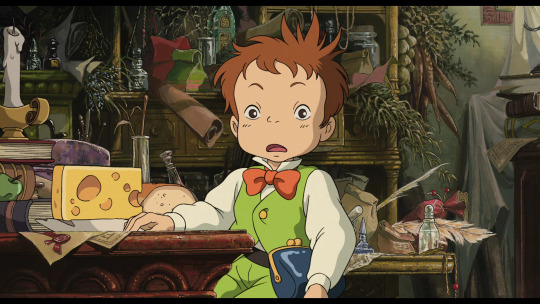
Second, the concept of a “favorite person” or FP. A FP is a person who someone with BPD relies heavily on for emotional support, seeks attention and validation from, and looks up to or idealizes. This is very different from having a best friend or a partner you love deeply, as FPs become the center of the person’s life and directly influences their mood, their behavior, even their sense of self. One feels as if they simply cannot live without this person, not in the romantic sense, but quite literally. This leads to an intensification of symptoms such as impulsive behavior and fear of abandonment.
Sophie is, by all means, Howl’s favorite person. Taking the whole time travel trope aside, he falls really quickly and deeply for her, and as I’ve mentioned before, changes his whole perspective in life because of this love. He tells her that the new most important thing in the world for him is now to protect her, and goes to war a last time just to fulfill this purpose. Sophie also has the ability to directly influence Howl’s mood in a way no other character can. The important detail to note here is that, where this can be a toxic or obsessive behavior pattern to people with unmanaged BPD, here Howl learns how to navigate this newly found love and all his other emotions in a healthy way, after his heart is back on his chest. This is not automatic, he expresses the burden of this new heart, but he will gradually become accustomed to it, and this leaves you with the feeling that he’s actually growing and evolving as a character, rather than things magically solving themselves when the star-crossed lovers get together.
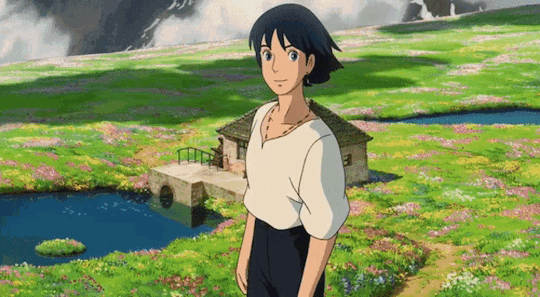
So, why does any of this matter? Well, to me it does because of a few reasons. But this is the main one: I’m not the only person that has noticed this similarities between Howl’s character arc and this disorder. Many neurodivergent and mentally ill people tend to look at characters that act similarly to them and think to themselves “hey, that’s me”. This innocent gesture of identifying oneself in media is really common, but for groups of people that are often marginalized, stigmatized or isolated, it becomes a sort of coping mechanism. Our experiences don’t appear in your regular happy coming of age film, and we’re too often forced to identify with either the villain or the really, really morally questionable characters. So, to see yourself in a character that is as loved as Howl (one of the anime community’s official heartthrobs) can be really healing. After all, he’s one of the good guys, and he gets his happy ending.
To conclude, I really recommend you go watch this film if you haven’t already, and if you happen to watch it again in the future after you read this post, I hope I was able to give you a new perspective.
Sources used in this post:
https://www.nimh.nih.gov/health/topics/borderline-personality-disorder#:~:text=A%20pattern%20of%20intense%20and,reckless%20driving%2C%20and%20binge%20eating.
https://www.borderlinepersonalitydisorder.org/what-is-bpd/bpd-overview/
https://www.theravive.com/therapedia/borderline-personality-disorder-dsm–5-301.83-(f60.3)#:~:text=The%20DSM%2D5%20describes%20Borderline,American%20Psychiatric%20Association%2C%202013).
https://www.nhs.uk/mental-health/conditions/borderline-personality-disorder/symptoms/
https://www.verywellmind.com/borderline-personality-disorder-diagnosis-42517
Melián Trujillo.
7 notes
·
View notes
Text


HOWL'S MOVING CASTLE ハウルの動く城 2004, dir. Hayao Miyazaki
2K notes
·
View notes
Text


HOWL'S MOVING CASTLE ハウルの動く城 2004, dir. Hayao Miyazaki
3K notes
·
View notes
Text
゚+*:ꔫ: bpd haver otd is zuko from atla. his subtype i thiiink would be discouraged considering his trauma response (ノ_;)ヾ(´ ∀ ` )




13 notes
·
View notes
Text

A playlist for Simon Laurent from Infinity Train for anonymous 💖 Floating in the Forth - Frightened Rabbit 💖 I was once A Loyal Lover - Death Cab for Cutie 💖 What Death Leaves Behind - Los Campesinos! 💖 ADIEU - Emily Bindiger 💖 Blue Jeans and Bloody Tears - Sweaty Machines 💖 Taste - Braids 💖 The Bug Collector - Hailey Haynderickx 💖 Doing it to Death - The Kills 💖 Apres Moi - Regina Spinktor 💖 Kill of the Night - Gin Wigmore 💖 ... well, better than the alternative - Will Wood 💖 Afterlife - Arcade Fire
4 notes
·
View notes
